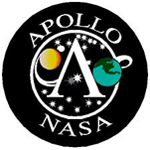Spotlight
An Apollo 50th Anniversary Moment
Written by: developer

Stagecraft through the Years
by John Holst, Space Foundation Research Analyst
Stage — the word is used in many ways.
For NASA, there’s one very distinctive usage of stage: the description of a cylindrical propulsive segment that’s part of a rocket, such as the Saturn V from the Apollo lunar missions. The space administration uses the word in more mundane ways, such as stages of a program schedule or staging a test. But whether schedule, test or rocket equipment, each kind of Apollo program stage was a critical step in time toward the rocket’s launch, with each pushing Saturn V’s Apollo spacecraft to the highest stage, the Moon. It takes some powerful rocket stages to get to the Moon.
One April day, nearly 50 years ago, teams at the Mississippi Test Facility began test-firing a Saturn V second-stage prototype. Five J-2 engines at the base of the prototype fired for the 15-second test. Each engine produced 225,000 pounds of thrust and combined to create over 1 million pounds of thrust. The fully developed Saturn V second-stage would push Apollo missions from 61 to nearly 185 kilometers (38 to 115 miles) above the Earth before dropping away from the Saturn V’s third stage, which would push the spacecraft even higher.
Other more powerful engines in other rocket stages would also be tested at the facility, including the Saturn V F-1 engine. A single F-1 could push out more than 1.5 million pounds of thrust. A Saturn V first stage using five F-1 engines would produce more than 7.5 million pounds of thrust. It was the most powerful stage of the Saturn V rocket, but all rocket stages were necessary to get to the Moon.
As with Apollo, NASA’s newest manned space exploration initiative, the Space Launch System (SLS) program, will be testing its rocket stages. A successful RS-25 rocket engine test occurred this March at the same Mississippi facility. That particular RS-25, which produces as much as 512,000 pounds of thrust, will be one of four installed into the SLS’ core stage, together pushing out over 2 million pounds of thrust. Those four engines, combined with the solid rocket motors on each side of the core stage, will give SLS enough capacity to lift the weight equivalent of 22 fully grown elephants to orbit. And while launching 22 space-suited elephants into space would be something to see, the more likely future of the SLS launching humans into the universe will still take center stage in the drama of manned space exploration.
Exploration is why NASA’s people will be on a different, possibly more public, stage at the Space Foundation’s 32nd Space Symposium this month. The New Horizons mission, a successful exploration mission sent to observe Pluto and beyond, was 10 years in the making. For NASA’s men and women, New Horizons is another exit and entrance, one of many parts they have played throughout the space administration’s history since before Apollo’s rocket stage testing. And they will give an encore.

This article is part of Space Watch: April 2016 (Volume: 15, Issue: 4).


